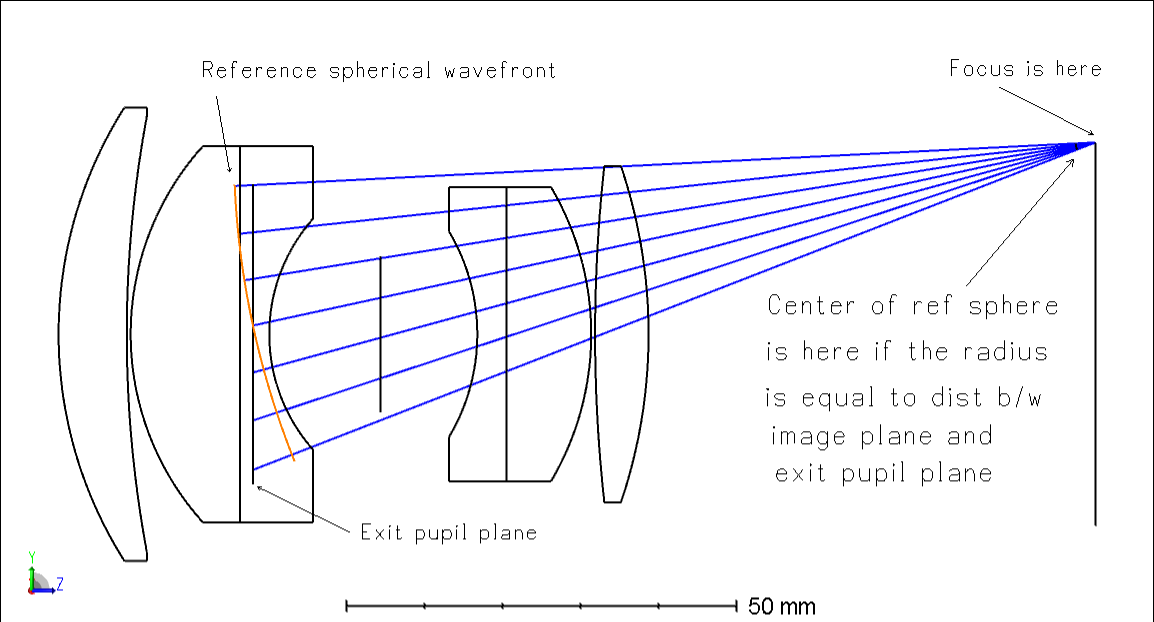Hello!
I just wanted to ask, what exactly is the reference wavefront that OpticStudio uses when computing the wavefront error of a system with an off-axis field?
I’ve read several posts talking about the reference wavefront, and to my understanding, the reference wavefront for an off-axis field is a sphere with a center that lies on the chief ray, and the sphere intersects the optical axis at the exit pupil plane.
I’ve read that the radius of the reference sphere is equal to the distance between the focal plane (image plane) and the exit pupil plane (this number is given by the exit pupil position in Prescription Data, multiplied by -1). However, for off-axis fields, I don’t think this is the case. I think the radius for the reference sphere is the distance between where the chief ray intersects the exit pupil plane and where the chief ray intersects the focal plane. This distance would be larger than the exit pupil position.
For example, I have an image below which illustrates where the reference wavefront (in orange) is located for a Double Gauss system:

I’m just confused about the parameters of the sphere (its radius and center). Thanks in advance for your help!



